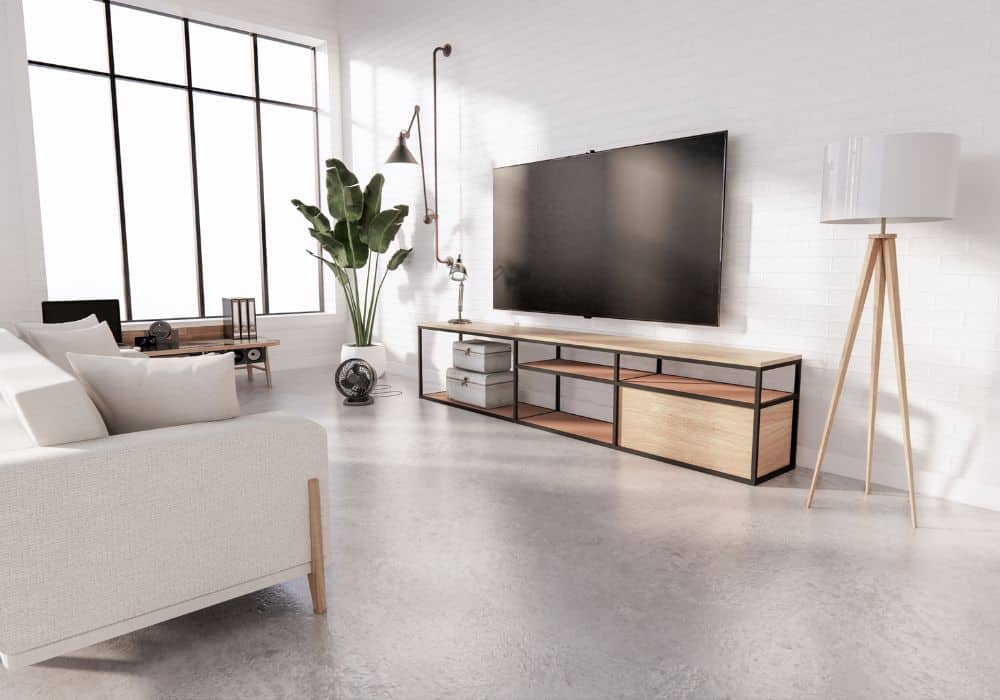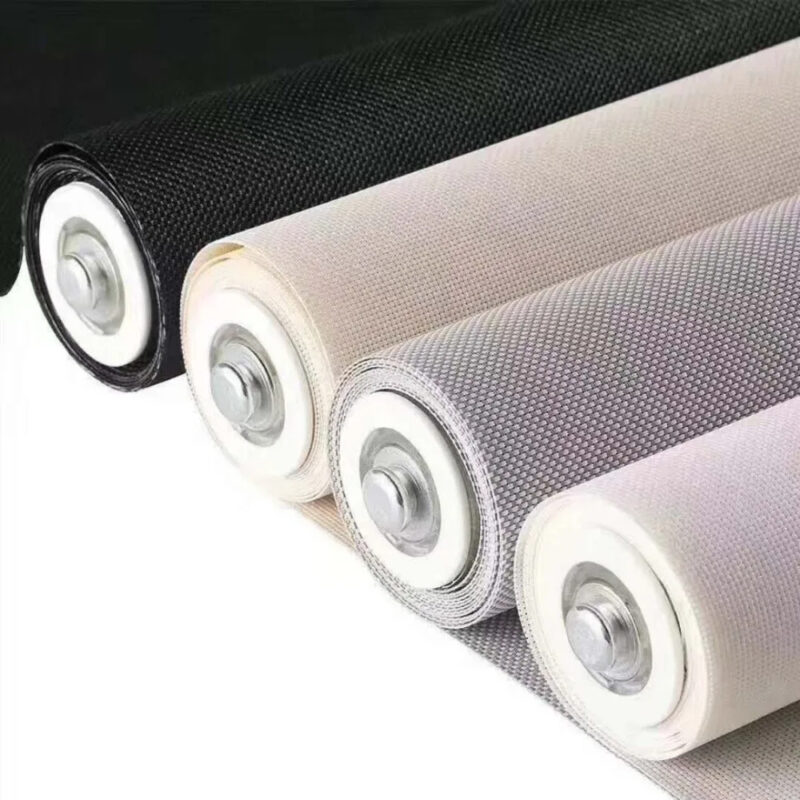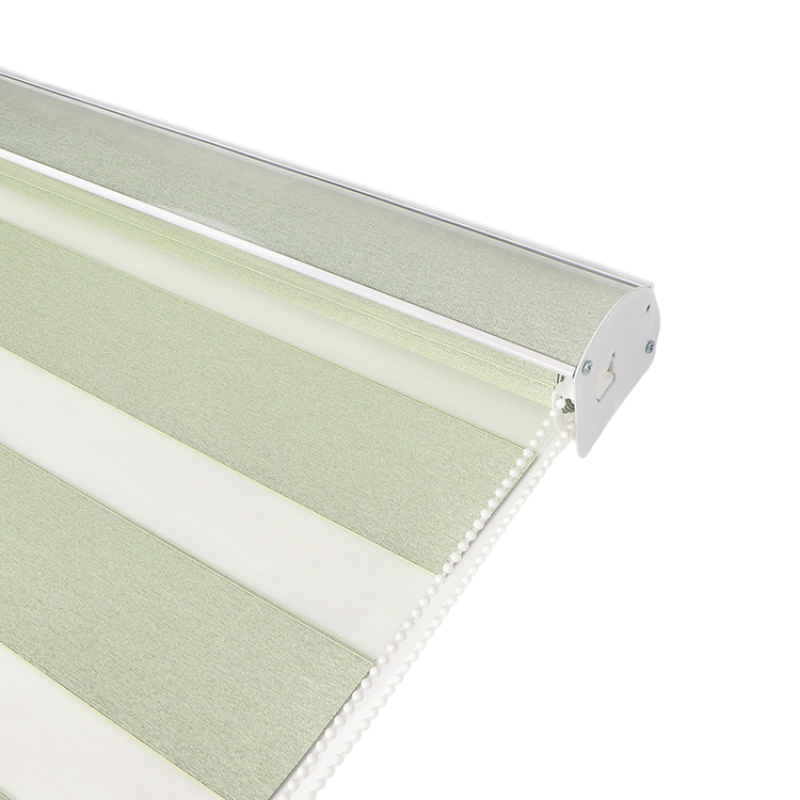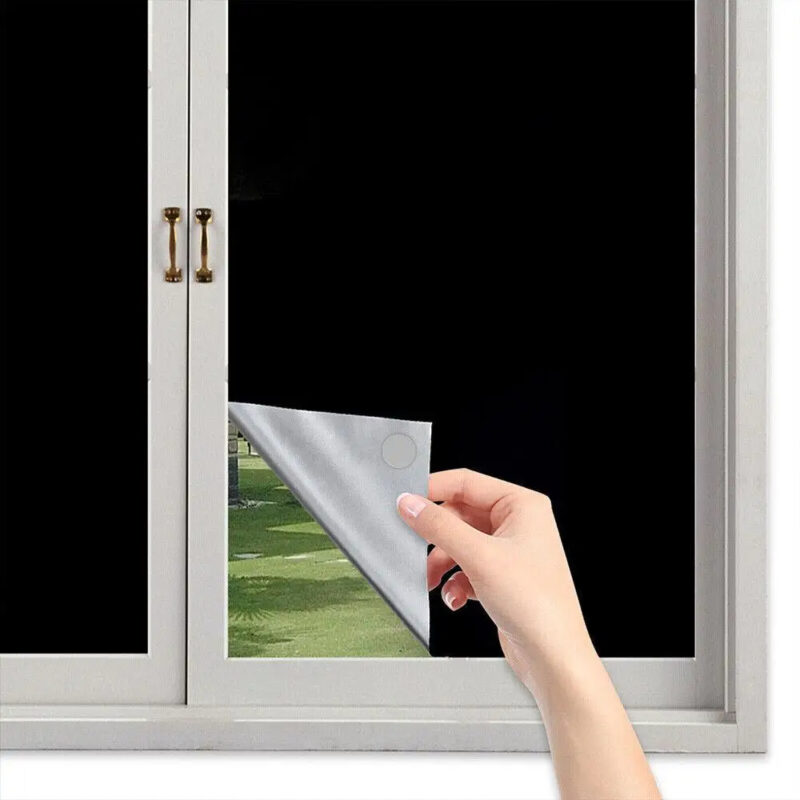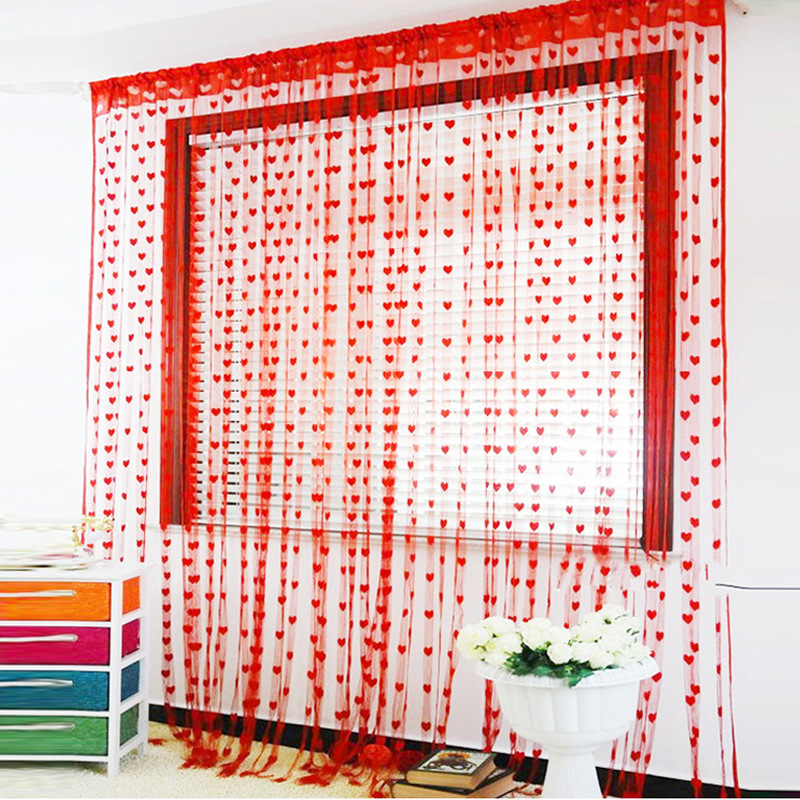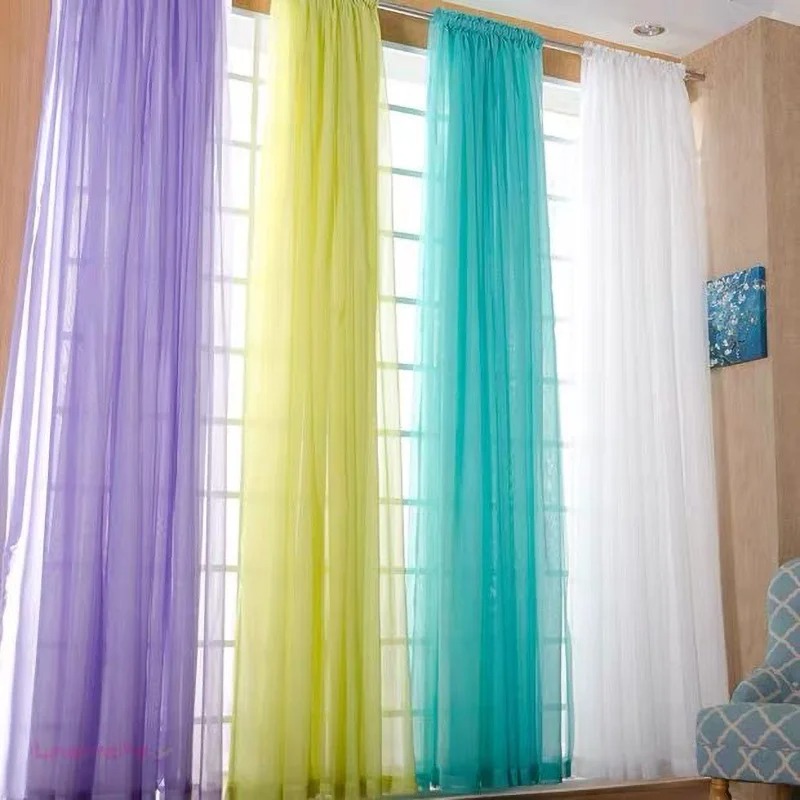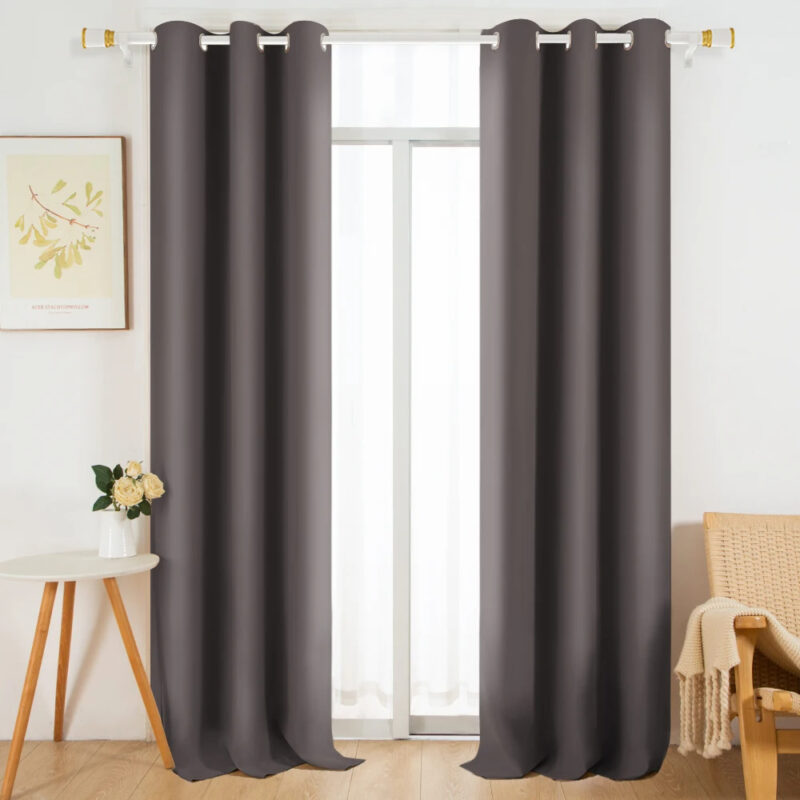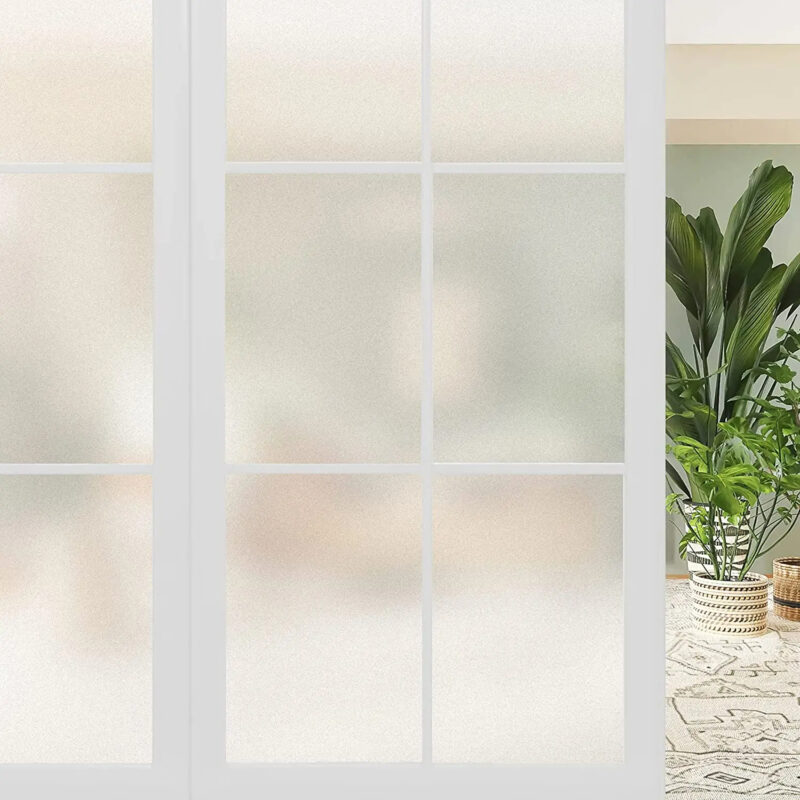Can You Put A TV In Front Of A Window? (Find Out Now!)

Your television is a major part of any living room, and can be a focal point of your home. However, that doesn’t mean that it’s easy to find the right place for it to go. Traditionally, a TV is put on a wall that doesn’t receive much outdoor glare.
While that tends to be the ideal position for this piece of furniture, sometimes, walls aren’t going to cut it. What about windows? Is it possible to put a TV in front of one?
Can you put a TV in front of a window?
Yes, you can put a TV in front of a window, but it may not be the ideal solution. Windows bring in a lot of natural light, which can cause glare that ruins the view of your TV’s screen. It also can put your TV at risk of getting knocked over by pets or kids.
However, if you have no other place to put it, you can always find a way to get the right TV placement in front of the window. It’s all about employing strategy.
What are the best ways to put a TV in front of a window?

Much of what you need to do will be around reducing glare and the chances of mishaps with the TV. These tips below can help:
- Angle the TV away from the area where sunlight hits. In many cases, this means leaving it parallel with the window. However, if your window is partly in a corner, you may need to check to see where the light falls when it’s daytime.
- Use an extension cord if your electrical outlets are too far. It’s important to remember that plug distance is not a major obstacle.
- Don’t put your TV near a radiator. This can actually put your equipment at risk of overheating. Depending on where the cords are, placing your TV too close to heat could run the risk of a fire.
- Pet proof your windowsill. If you have cats or dogs, you may want to try to place your TV in the corner of your room instead. Animals love windowsills, and it only takes one playful cat or dog to cause your TV to fall.
- Do not put your TV underneath a window with an air conditioner. The air conditioner can leak and damage your TV. Moreover, the moisture it generates poses a threat to the wellbeing of electronics.
- Keep viewing distance in mind. You don’t always need to have a TV flush against a wall. If it’s too far away, it can cause eye strain.
- Choose a window that faces a shady part of your yard. A window facing shady parts of your yard, tall trees, or even other buildings will reduce the level of glare you have to fight. If you have to choose between windows, pick the one facing the most shade.
Do you need an entertainment center or TV mount to put a TV in front of your windows?
There is some good news and some bad news here. The good news that you don’t always need a mount to install your TV. Some televisions are meant to stay on the floor. However, most people prefer to mount them or use console table for their TV.
This isn’t just a matter of keeping glare away from your monitor. It’s also a matter of safety. Having your TV ceiling mounted can prevent damage from pets. In cases of using an entertainment system, it can also help prevent falls and water damage.
A custom entertainment center that clings to the area around your TV can offer you storage and also make your glare issues go away. It’s definitely a smart way to go about things.
Is there any other setup that can work well with a windowed room?
Another option to consider is using a TV lift. This allows you to lift your TV up to viewing level when you want it to be in use. When it’s not, the lift can be lowered so that you get the full scope of view from your window.
This is a great choice if you want to have more space and just give your TV the look of sitting on a windowsill. Getting a TV lift isn’t always easy, but it’s always doable if you keep looking. We also suggest getting a structure that helps conceal the TV when it’s not in use.
PRO TIP – Adding a concealer can help bring your room a more seamless look and also reduce clutter.
How can you reduce glare from your windows?
Getting rid of glare can be mostly done through choosing to place the TV near the right wall or window, but it’s not all you can do. There are ways to prevent UV rays from going through your windows. Let’s look at the easiest methods here.
1. Install blackout curtains
Blackout curtains are the most common go-to solution for high-glare windows. They can block up to 99 percent of UV rays from entering your home. This can help you ensure that you reduce glare, but it also can make your room look darker and dreary if you are not careful.
If you are not a fan of dark rooms or finagling with curtains, choose a different option. Don’t worry, there are tons of options.
2. Get roller blinds
Roller blinds are the easiest ways to block UV rays from entering your home without having to worry about finagling with multiple strings. Blinds offer less chance of reheating and problems than curtains, and also are easier to adjust as the day passes.
Another good thing about roller blinds is that they tend to be easier to install than regular blinds. It’s possible to find EZ-mount roller blinds that only take 10 minutes to install.
3. Or, get regular blinds
This is not ideal because regular blinds and Roman blinds tend to leak light through holes in the fabric. They also tend to be more difficult to install. However, if you get blinds of the right material, this could turn your room into the perfect spot for a TV.
PRO TIP – Blinds can be deceptively thin, When choosing your blinds in-store, talk to the person at the store about what your purpose is. They will be able to help direct you to the best option there.
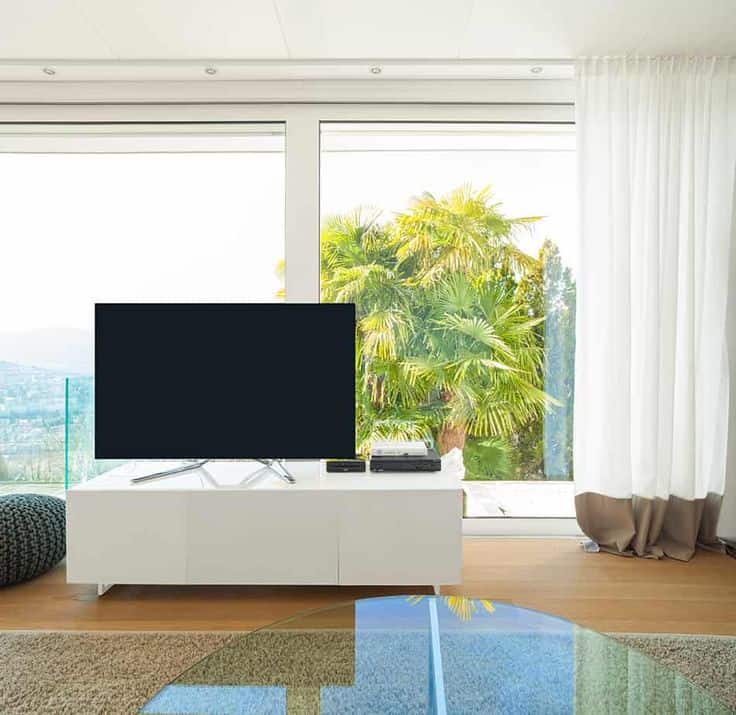
4. Frost your windows
If you don’t mind being unable to see out your window but still want to get light from it, then frosting your windows may be a good idea. Frosting diffuses and softens the light, reducing the harshness of the light you get.
Frosting is often best left to a professional, but there are DIY kits if you want to do it yourself. Frosting will not entirely remove the glare, but it will help reduce it significantly. If you have marginal glaring issues, this could be a smart move.
5. Add a window tint
Frosted windows aren’t for everyone. Stylistically speaking, they can be fairly annoying or dated. If you need visibility, it’s clear that frosting your windows isn’t an option. However, there are other treatments that can help you get rid of glare.
A good way to do this is to get your windows tinted. This can be done via a professional service, or via a quick window cling-on tint. Tints are generally temporary and can be peeled off. The good thing about them is that they offer shade and glare reduction affordably.
Tints can range from the deeply subtle to the overtly dark, so you have a lot of options in terms of styling. Some windows also have built-in tinting. If your is built-in, don’t panic, you can also layer cling-on tints to get a better result.
Where is the best place to put a television?
Putting a TV near a window is not exactly ideal, but you may have a place in your home that is better suited for it. The best place for a television is against a wall with no windows, away from heat sources, across from a wall that has no windows.
If you cannot put it there, then choose a window that is across from a full wall. This decreases the amount of reflective glare that you have hitting the window. If you can’t quite do that, block the window with a bookcase.
In conclusion
Putting a TV under a window or in front of one isn’t ideal, but it’s doable. The key thing to remember when choosing TV placement is that you need to employ some strategy. So, take some time to plan things out.
As long as you get a full glimpse of how your TV will look during daytime, you should be okay. It’s just a part of planning.

